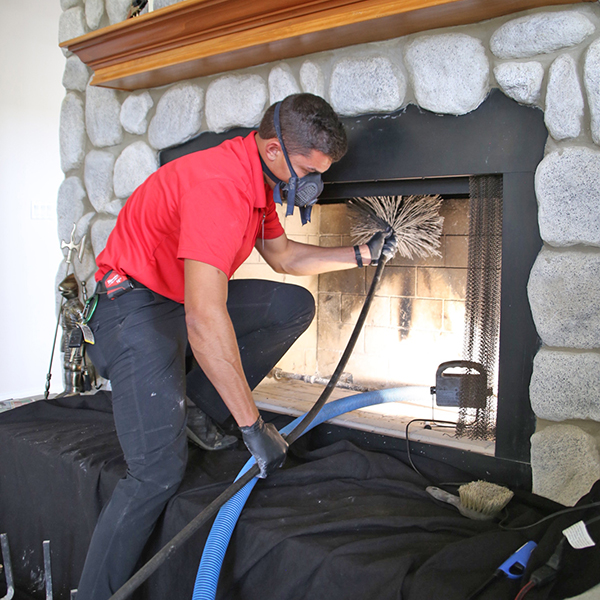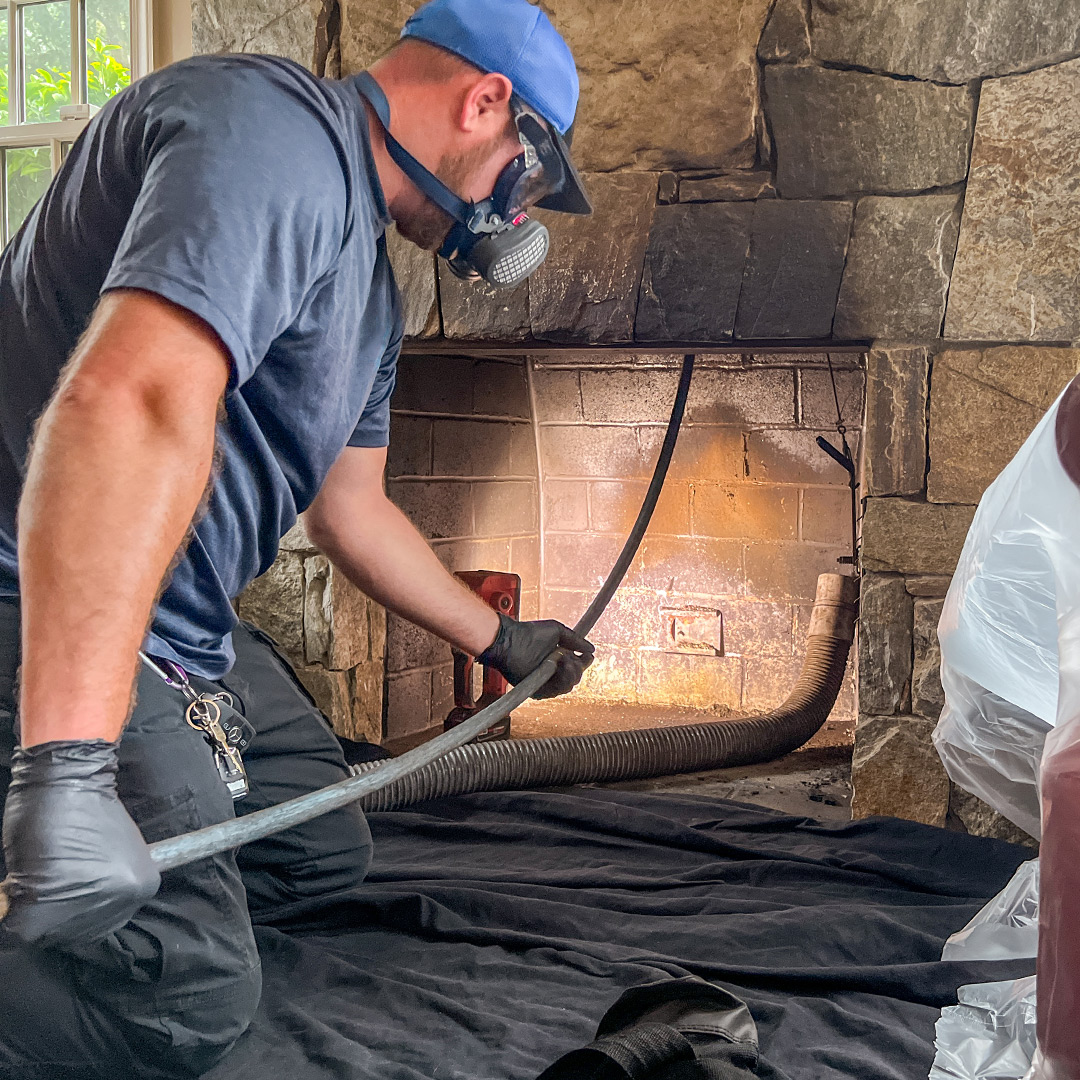Chimney Clean San Jose Proficiency: Professional Take Care Of Your Fireplace and Hearth
Chimney Clean San Jose Proficiency: Professional Take Care Of Your Fireplace and Hearth
Blog Article
Smokeshaft Cleansing: A Step-by-Step Overview to Maintaining a Healthy Fire Place
Keeping a healthy and balanced fire place is critical for the safety and efficiency of your home. Routine chimney cleaning is a crucial part of this upkeep routine. In this step-by-step guide, we will certainly supply you with detailed guidelines on exactly how to properly clean your chimney, guaranteeing that it operates ideally and lowers the threat of fire hazards. By adhering to these guidelines, you will learn just how to collect the essential tools, carry out an aesthetic examination, clear debris and accumulation, sweep the smokeshaft, and complete the last steps for continuous maintenance. With an expert strategy and attention to information, you can confidently deal with your fire place and enjoy its heat and convenience for years to come.
Gathering the Essential Devices
To start the procedure of smokeshaft cleaning, the primary step is to collect all the required devices. Having the right devices handy makes sure a efficient and secure cleaning process. The important tools for chimney cleansing include a chimney brush, a ladder, ground cloth or plastic sheets, a flashlight, gloves, and a dust mask.
The smokeshaft brush is the main device utilized to eliminate residue and creosote accumulation from the flue - Chimney Sweep San Jose. It is essential to choose a brush that matches the size and shape of your smokeshaft.
A flashlight is necessary for evaluating the smokeshaft's inside for any type of indications of damages or obstructions. Gloves are necessary to secure your hands from soot and various other unsafe materials, while a dirt mask aids prevent the inhalation of debris.
Carrying Out a Visual Evaluation

Using a flashlight, meticulously examine the interior walls of the chimney for any type of indications of damages, such as splits, loosened blocks, or mortar deterioration. These issues can compromise the chimney's structural stability and present a severe safety and security threat. In addition, look for any kind of indicators of water damages, such as discoloration or efflorescence, as this can show a dripping smokeshaft cap or blinking.
Following, check the smokeshaft flue for any type of blockages. Try to find the visibility of nesting products, leaves, or particles that may have built up in time (Chimney Sweep San Jose). These obstructions can restrict airflow, increase the risk of carbon monoxide build-up, and hinder the chimney's ability to effectively vent smoke
During the aesthetic assessment, pay attention to the chimney crown, which is the top surface that secures the smokeshaft from dampness. Search for fractures or missing items in the crown, as these can permit water to get in the smokeshaft and trigger considerable damage.
Cleaning Debris and Accumulation
After finishing the visual inspection, the following action in chimney cleansing includes clearing particles and build-up to ensure the correct functioning of the fireplace. With time, debris such as fallen leaves, twigs, and animal nests can collect in the chimney, blocking the flow of air and creating prospective fire hazards. In addition, the accumulation of creosote, a tar-like material, is a typical problem in smokeshafts. Creosote is formed when timber or fossil fuels are shed, and if not eliminated consistently, it can bring about chimney fires.
A smokeshaft brush, especially designed for this objective, is made use of to eliminate loose debris and creosote from the chimney walls. It is essential to choose a brush that matches the dimension of your smokeshaft to ensure reliable cleaning.
To start, put the brush right into the chimney and move it up and down, scrubbing the wall surfaces to displace any kind of particles or creosote. When the brushing is complete, make use of a vacuum cleanser or a smokeshaft brush extension to remove the dislodged particles from the fire place.

Brushing Up the Smokeshaft
The sweeping of the smokeshaft is a critical action in preserving a healthy fireplace. Over time, soot, creosote, and various other particles can gather in the smokeshaft, obstructing the flow of air and potentially causing a dangerous build-up of combustible products. Routine chimney sweeper not just makes certain appropriate ventilation but also prevents the threat of smokeshaft fires.
When it pertains to chimney sweeping, it is highly advised to employ an expert chimney move. These professionals have the understanding and tools essential to securely and efficiently remove the gathered particles from your chimney. They will typically begin by covering the fireplace to avoid any kind of soot or debris from entering your home. Making use of specific brushes and vacuum cleaner devices, they will after that clean up the smokeshaft from leading to bottom, making certain that all the accumulation is thoroughly gotten rid of.
It is necessary to keep in mind that the frequency of smokeshaft sweeping depends on a number of factors, such as the sort of gas utilized, the amount of usage, and the kind of chimney. As a basic general rule, it is recommended to have your smokeshaft brushed up and examined a minimum of annually.
Final Actions and Maintenance
After completing the chimney sweeping process, the very first step in the final upkeep is to check the smokeshaft cap and trigger arrestor. These parts protect against particles, pets, and rain from getting in the smokeshaft.

Inspect the within the fireplace for any type of indicators of damage, such as cracks, loose blocks, or harmed view publisher site mortar. These concerns can impact the look at this website structural stability and safety of the fire place. Get in touch with a professional chimney sweep or mason to address them without delay. if any problems are identified.
Lastly, think about setting up carbon monoxide detectors near the fireplace and throughout your home. These devices can spot the presence of this dangerous gas, providing a very early caution system in situation of a chimney malfunction. Frequently check and replace the batteries in these detectors to guarantee their performance.
Final Thought
To conclude, complying with a detailed overview for chimney cleaning is important in preserving a healthy fireplace. By gathering the required tools, performing a visual inspection, clearing particles and accumulation, and brushing up the smokeshaft, house owners can make sure the security and effectiveness of their fireplace. Regular maintenance and cleansing will certainly assist avoid chimney fires and boost air top quality in the home. It is necessary to focus on chimney cleaning as a component of general home maintenance.
The vital tools for smokeshaft cleaning consist of a chimney brush, a ladder, decline fabrics or plastic sheets, a flashlight, handwear covers, and a dust mask.
A chimney brush, specifically created for this objective, is used to remove loosened debris and creosote from the smokeshaft wall surfaces. Routine smokeshaft sweeping not only guarantees appropriate air web flow yet additionally avoids the threat of chimney fires.
When it comes to chimney sweeping, it is extremely suggested to employ a professional smokeshaft sweep. After completing the chimney sweeping procedure, the very first step in the last maintenance is to inspect the smokeshaft cap and trigger arrestor.
Report this page